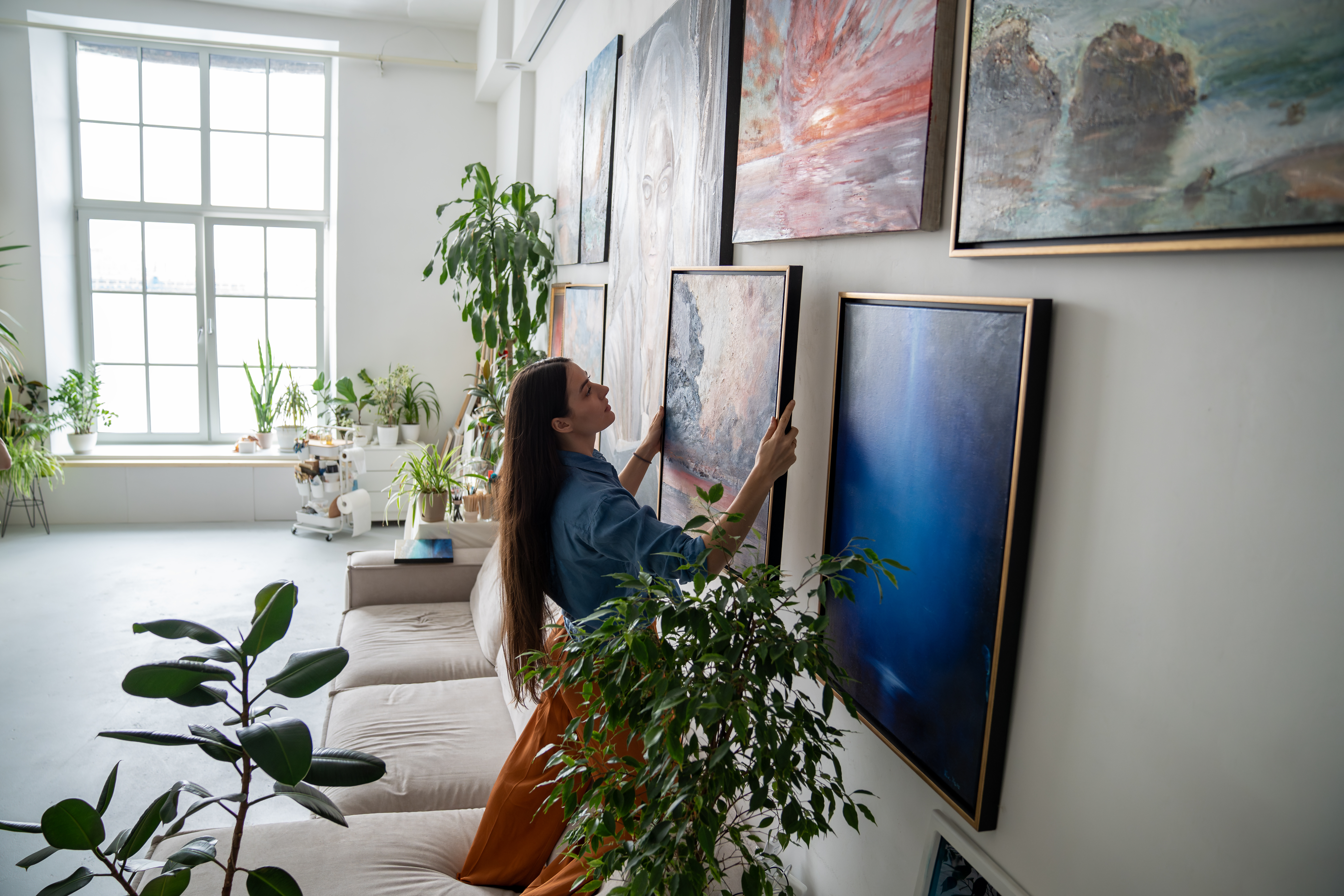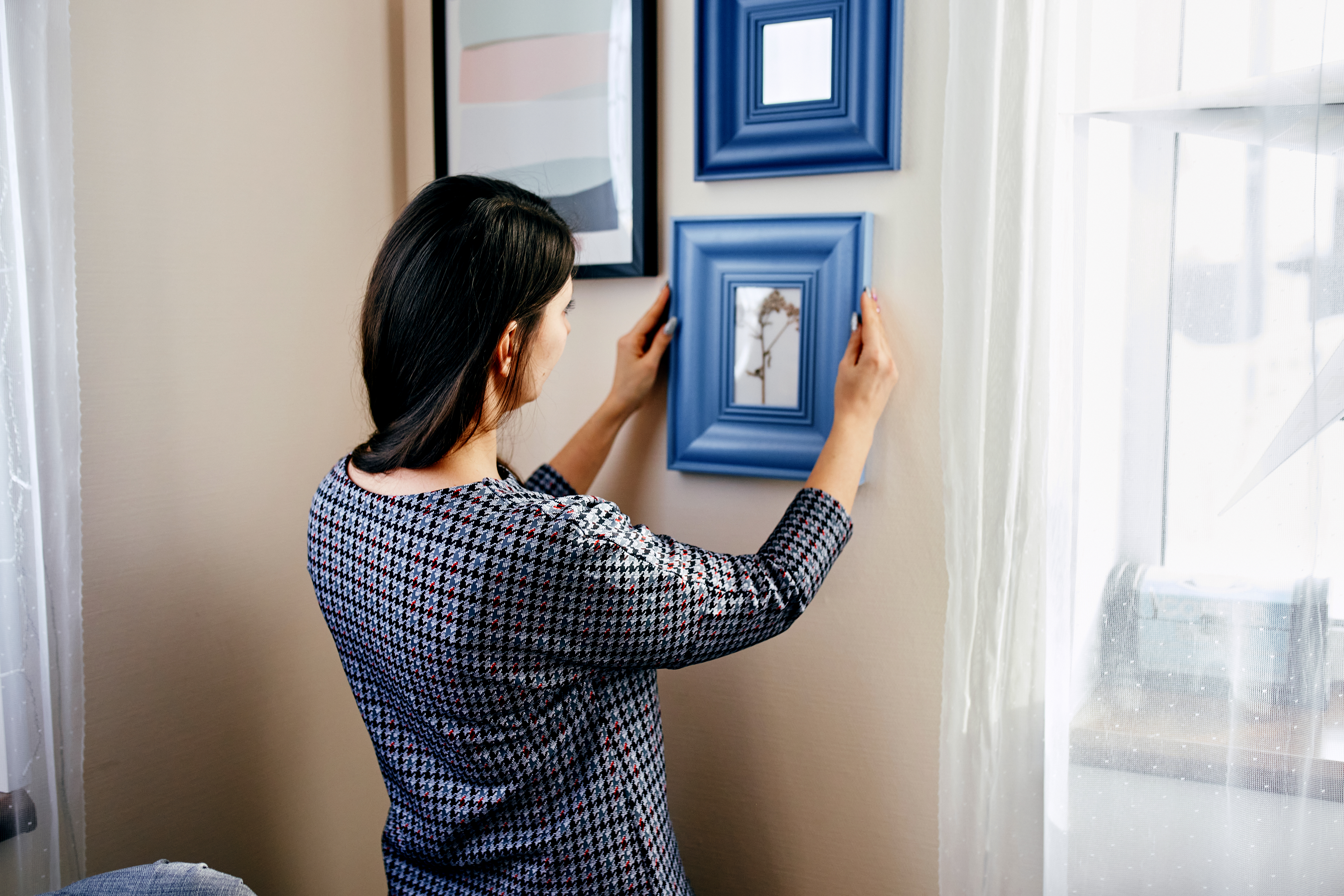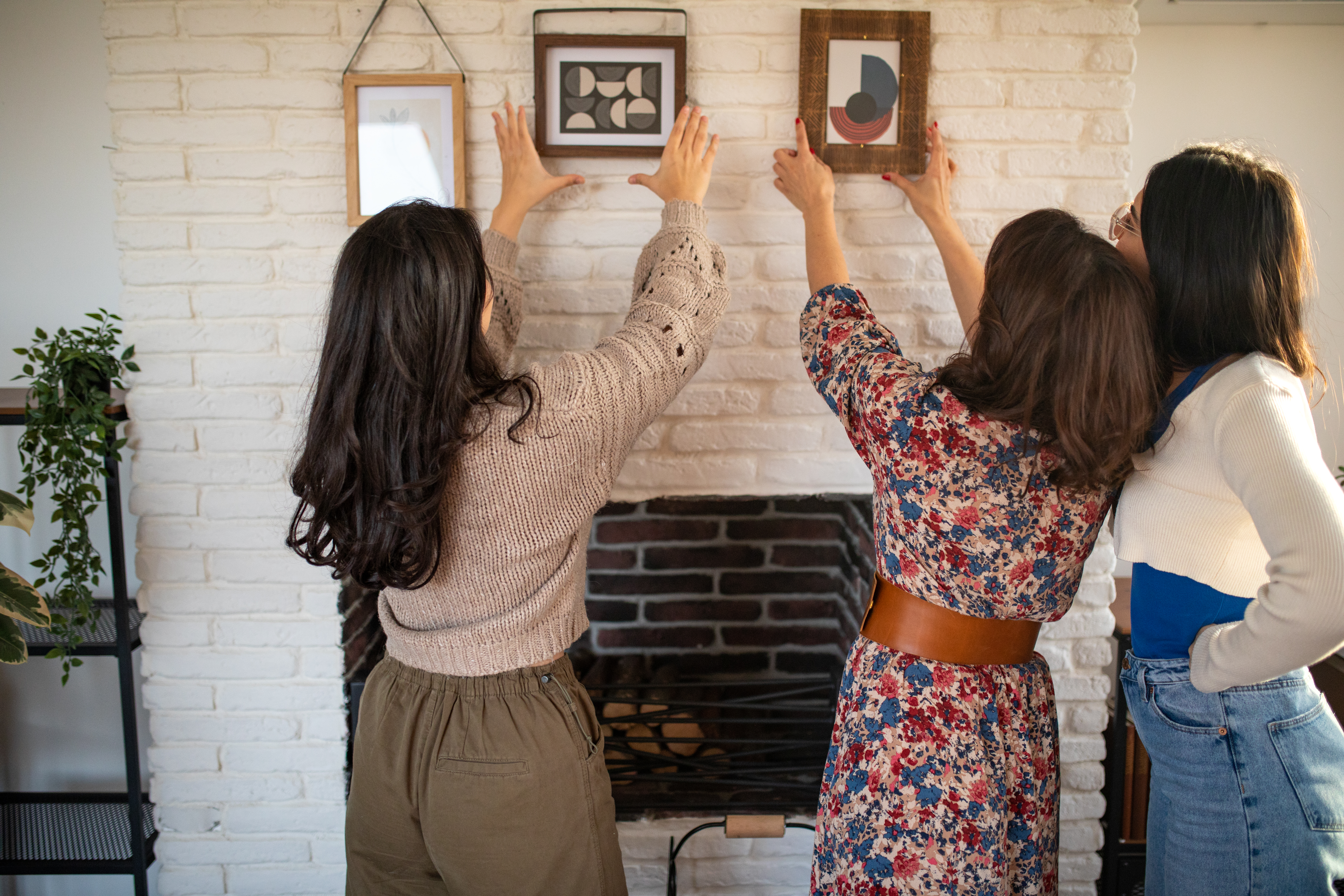
Whether you need to ship a moving container overseas or domestically, you can expect to pay several thousands of dollars. Learn more using our cost guide.
Bring your favorite art, photos, and mementos together in style


Maybe you’re staring at an empty wall that needs something to make it pop, or perhaps you have a huge collection of art that you want to display. No matter your situation, a gallery wall can bring it all together and become a conversation starter in your space. Displaying many pieces cohesively can be daunting, but these nine gallery wall ideas and tips can help you find your perfect design.
You can arrange a gallery wall any way you choose, but one of the easiest ways to keep things interesting and incorporate a variety of pieces is with an asymmetrical layout. This type of layout allows for varied spacing, sizing, orientation, and style.
Mix vertical and horizontal pieces by alternating orientations, pairing them, or creating small mini-galleries of three to four pieces within the larger layout.
To create a curated look, choose a palette of colors that repeats throughout the wall. This will allow you to mix multiple styles of art, photography, and other items while keeping everything cohesive. You can also stick to matching or complementary frame colors.
There are no strict rules when choosing a palette for a gallery wall, so if a wide variety of colors and styles best suits your vision, go for it!

Frames are often an afterthought, but their style can impact the feel of each piece and the whole gallery wall. When choosing frames, keep the following in mind:
Stick with just a few colors, styles, or finishes for a more cohesive wall
Frame photos with a wide mat to make them feel more like art
Try putting multiple photos in a single frame
Float-mount photos, art, and objects to elevate their look
Not everything needs a frame, especially three-dimensional objects
Few things are more frustrating than nailing holes in a wall only to decide that you want to change your layout. Avoid this frustration by planning your layout in advance. Measure the height and width of the space you want to fill with your gallery wall, then use one of the following methods:
Lay large sheets of paper or a tape perimeter on your floor, and lay your pieces inside
Cut out cardboard pieces to match the size of each art piece and tape them to your wall
Use digital software (such as PowerPoint) to lay out images of each piece
Once you have assembled your layout, rearrange pieces until it's perfect.

Spacing in an asymmetrical gallery wall design doesn't have to be perfectly even, and it helps to have some variation. However, you may wish to choose a standard spacing to use as a starting point. This could be as simple as finger-widths or a more precise distance like three inches.
Don't be afraid to have negative space or gaps on the wall—you can fill awkward margins with small objects.
Gallery walls don't need to be made exclusively of photos and art prints. Anything can be hung on your wall, and adding personal items and other decorative objects can fill awkward negative spaces and give your design more dimension. Some examples of items you might want to incorporate include:
Ceramics and plates
Polaroids
Wedding vows
Charms
Embroidery hoops
Mementos
Ultrasounds
Mirrors
Sconces
Neon lights
Shelves
Planters
These objects may require a visible fastener such as a hook or nail, so ensure you have a stylish option you won't mind seeing.
One of the most useful tips for hanging pictures is to start with your largest pieces. When you’re creating a large gallery wall, place your largest piece slightly off-center in the middle. For a smaller gallery collection, place it in one of the four corners. Place your next largest piece diagonally from the first. As you continue to arrange your layout, spread out pieces of similar size, color, and style.

Laying out and hanging a gallery wall is much easier if you have a helping hand. Have your partner hold up each piece against the wall before you hang it so you can see how it looks and make adjustments as needed. You can also mark where the nails or hooks should go while they hold each item for you.
If you want to ensure that every picture you hang is perfectly spaced and leveled, hire a local picture hanging pro to assist you.
You don't have to put your entire gallery wall together at once. If you only have a few pieces to start with, hang them now and keep your eye out for more items to add to your design later.
From average costs to expert advice, get all the answers you need to get your job done.

Whether you need to ship a moving container overseas or domestically, you can expect to pay several thousands of dollars. Learn more using our cost guide.

The cost to move a tiny house depends on its weight, distance, and what type of moving equipment is required. Our guide can help you budget for your move.

If you’ve ever tried moving a pool table, you know it’s a big undertaking. Here’s an overview of what factors into the cost to move a pool table.

Packing houseplants for a move is often overlooked until the last minute. Learn how to pack your plants for a safe move, even in extreme conditions.

Before you move out of your apartment or house, find out how to clean up and avoid damage costs with our move-out inspection checklist for each room.

Moving your car across the country can cost hundreds or thousands of dollars, depending on if you plan to drive, tow, or ship it.